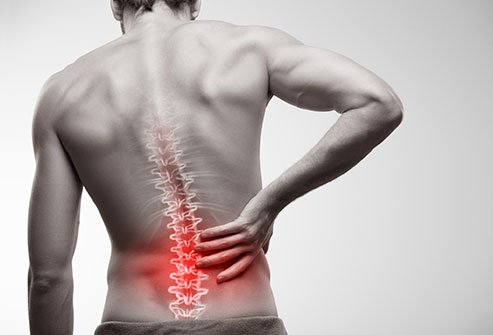
What is Low Back Pain (LBP)?
Back pain is one of the most common reasons people visit a doctor.
Back pain can range in intensity from a dull, constant ache to a sudden, sharp or shooting pain. It can begin suddenly as a result of an accident or by lifting something heavy, or it can develop over time as we age. Getting too little exercise followed by a strenuous workout, or sitting for long periods of time can also cause back pain.
What causes low back pain?
The majority (about 90%) of all patients with LBP have non-specific low back pain (also called simple or mechanical LBP). This diagnosis is made when serious and specific causes of low back pain have been ruled out.
LBP can be caused by specific conditions including cancer, spinal infection, ankylosing spondylitis, cauda equina syndrome, compression fracture, symptomatic spinal stenosis, or herniated disc with radiculopathy, but these are rare and account for 10% of cases.
Work-related low back pain is one of the most common types of back pain- Having a job that requires heavy lifting, pushing, or pulling, particularly when it involves twisting or vibrating the spine, can lead to injury and back pain. Working at a desk all day can contribute to pain, especially from poor posture or sitting in a chair with not enough back support.
Is there a right way to sit?
Posture does impact back pain -those sitting in a flexed/bent forward position for long periods of time will experience more back pain
But the length of time we sit may also have an impact on lower back pain and sitting for long periods with any posture results in increased spinal loading and pain.
Therefore, frequent changes in position from sitting to standing are highly recommended in the prevention of low back pain.

Self-care
• Stay active. Resting for long periods may make the pain worse
• Do exercises and stretches for back pain – e.g. walking, swimming, yoga and pilates
• Take anti-inflammatory painkillers or muscle relaxants for symptomatic relief
• Use hot or cold compression packs for short-term relief
Most back pain gradually improves with self-care, usually within a few weeks.
Contact your doctor if your back pain:
• Persists past a few weeks
• Is severe and doesn't improve with rest
• Spreads down one or both legs, especially if the pain extends below the knee
• Causes weakness, numbness, or tingling in one or both legs


